Y Filltir Sgwâr/The Square Mile: Getting to know Mynydd Farteg
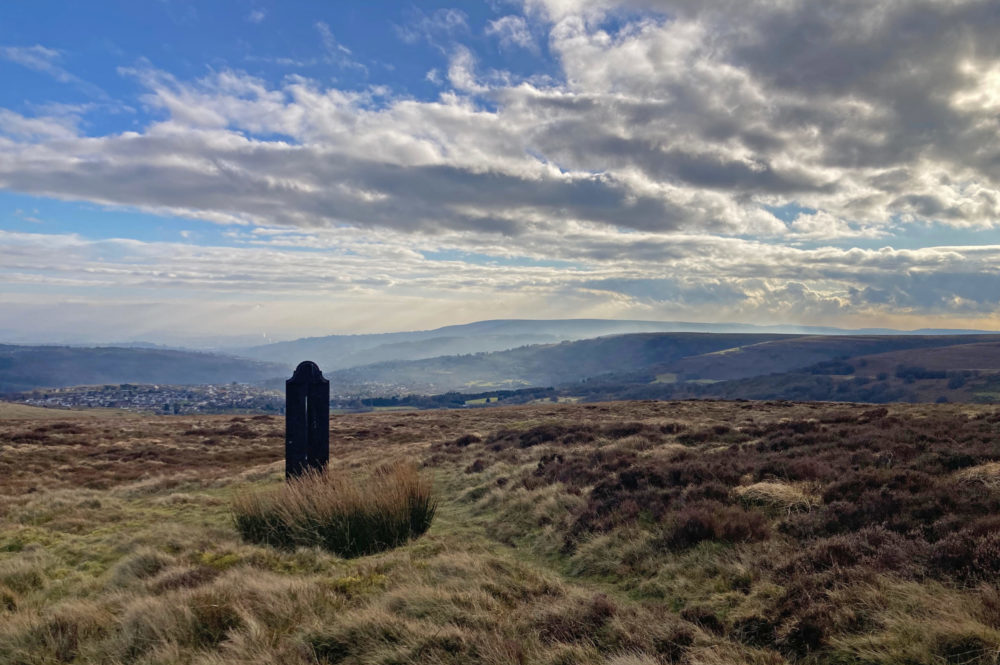
In a year long series Tom Maloney, from Abersychan, shows how you can love a place so well it becomes a part of you.
I feel very fortunate to live in Abersychan for so many reasons, not least of which is that it is perfectly nestled within an historic landscape and sheltered by beautiful hills, of which Mynydd Farteg Fawr is one.
A thought occurred to me as I stopped to take in a wonderful winter profile of the hill through a woodland window at the edge of the Lasgarn Wood last week was that I had not really given enough time to this beautiful and yet often underrated feature of the landscape through this year long series.
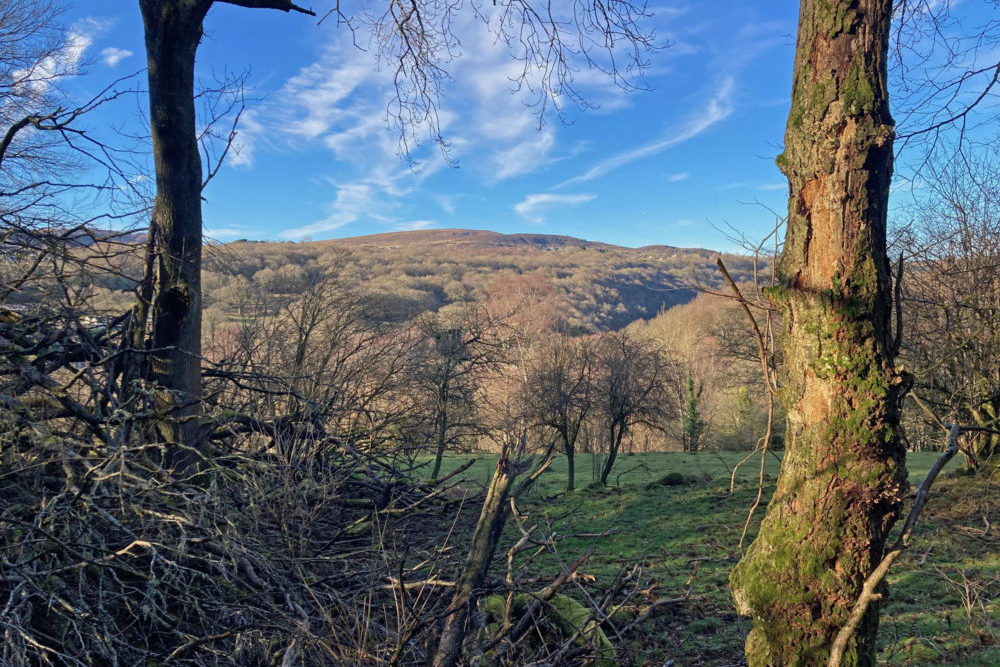
Moreover, I believe it goes under the radar for many people locally. I would include myself in this for many of the years that I have lived in Abersychan. It is probably only in the last five years or so that I have really started to appreciate it, a feeling of fondness that has grown with the writing of this series.
Although I have devoted one article previously to this commanding hill and included snapshots in other features, I really don’t think that this has been enough.
Grandest of views
So, this little article, the fifty first in the series, is an attempt to redress the balance. Besides, it’s a lovely opportunity to look back over my photographs and to revisit some of my favourite places from which you get the grandest of views of the hillside, as well as publishing some photographs taken during the past week.
Why does it go under the radar?
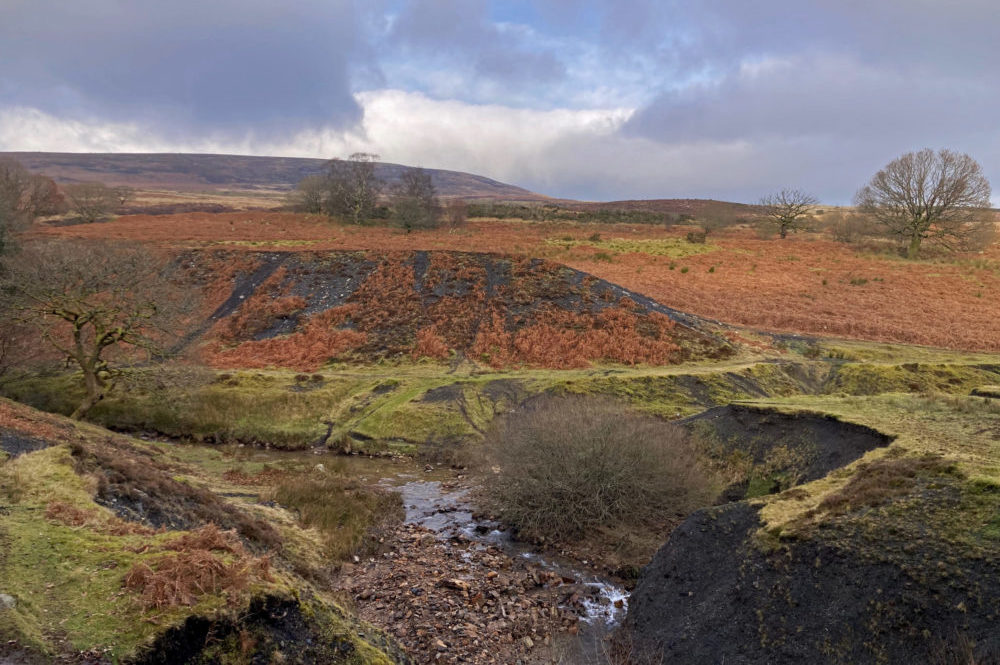
‘In an era of climate grief and polarizing debates on land use, diet and more, it matters that we understand the world we are in and can evaluate intelligently the roads we travelled to get here.’ From – ‘Tir, The Story of the Welsh Landscape’ by Carwyn Graves.
How right Carwyn Graves is that we should understand the world we are in, but sometimes we don’t see what is right in front of us and I think Mynydd Farteg is a bit like this.
It does not seem to be that well known locally. Perhaps, this is because of its mining legacy or maybe it is because unlike Pen y Fal (The Sugar Loaf), Y Blorens (The Blorenge) or Ysgyryd Fawr it lacks a picturesque view from a main road.
For me, this has all changed through exploring the landscape on foot. Mynydd Farteg, or should I say Mynydd Farteg Fawr (Big) and Mynydd Farteg Fach (Little), as they are named on the Ordnance Survey map, have become very familiar features of the landscape, that change with the seasons and present such different faces depending on your viewing point.

So, let’s take a step back in time to March of 2024 for a photograph of the ridge that I took from Mynydd Garnclochdy, known to many locally as ‘The Devil’s Heap of Stones’.
Local legend has it that the Devil dropped the stones on the hillside at Garn Clochdy, which in English translates as ‘Bell Tower Cairn’. According to the story, the Devil had been stealing the stones from the nearby church being built by St. Cadoc. In order to put a stop to his ill deeds St. Cadoc had a large bell made, the thundering sound of which frightened the Devil so much whilst in flight that he lost control of his ‘booty’!
I like to sit on the stones and gaze over the valley and incidentally they do have a look of being dropped from on high. The view is truly panoramic and, on this occasion in March, there was a powdery covering of snow defining the ridge of hills at Varteg as well. For me this is a good place to fully appreciate one of the local names for the mountain, which I learned from a reply to my last article from @Chilternbirder –
‘A little comment on the name of the mountain. My cousin’s family who lived in Varteg Road always used “The Coity” as the name for the entire ridge north of Varteg Waste.’
This makes perfect sense when you look at the ridge line on the Ordnance Survey map and it is always good to learn something new.
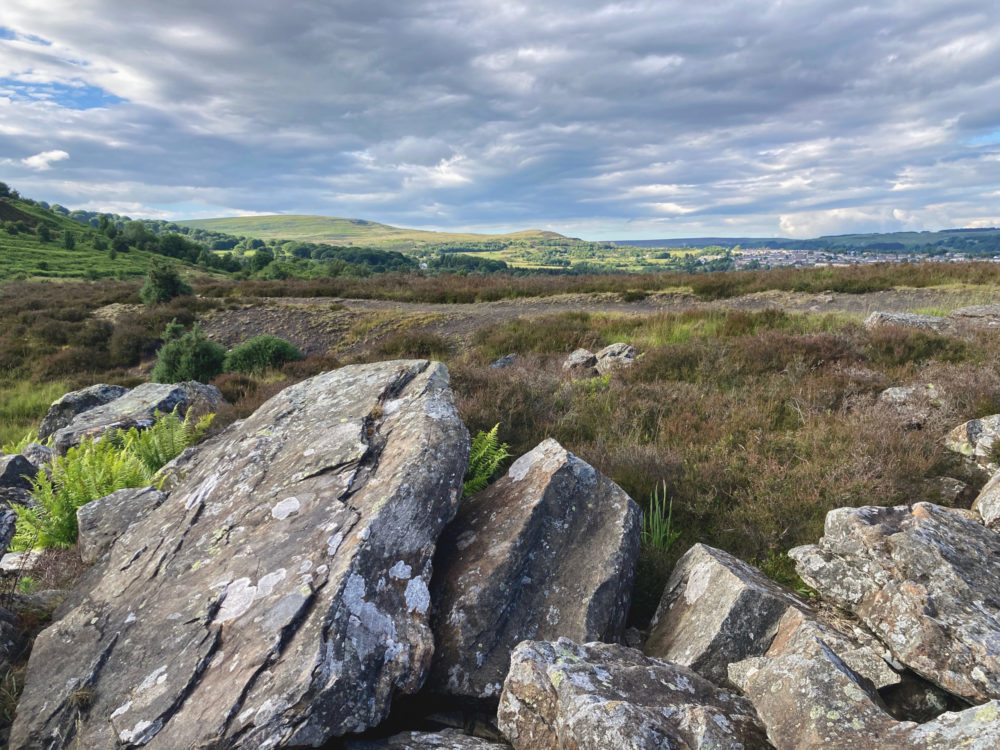
From one place of stones to another, the Pant Glas Slip at The British, Abersychan is the best place that I know to clearly see the profile the Mynydd Farteg Fawr and its smaller namesake and how green the hills looked in the summer months.
Pant Glas Slip, has a rather sleepy feel to it now, but the fall of stones that occurred here when mining of coal was still taking place very close by must surely have been a major event at the time.
There are some limited published references to the history. In ‘The Cwm Sychan Circular Walk’ published by Torfaen County Borough Council two slips are mentioned –
‘The slips took place in 1860 and 1861, engulfing the Cwm Byrgwm Mine and several cottages, although remarkably no-one was hurt.’
This is again another place in my landscape that I have come to know well and to have a great fondness for as it reminds me so much of the great works of Paul Cézanne, especially ‘Cliffs in L’Estaque’, a painting that I have only seen as a photograph, as you would have to travel all the way to the Museu de Arte de São Paulo to see it on display.
There is just something very special about these scattered, lichen encrusted boulders at Pant Glas, which in places seem to point the way to the Varteg skyline.
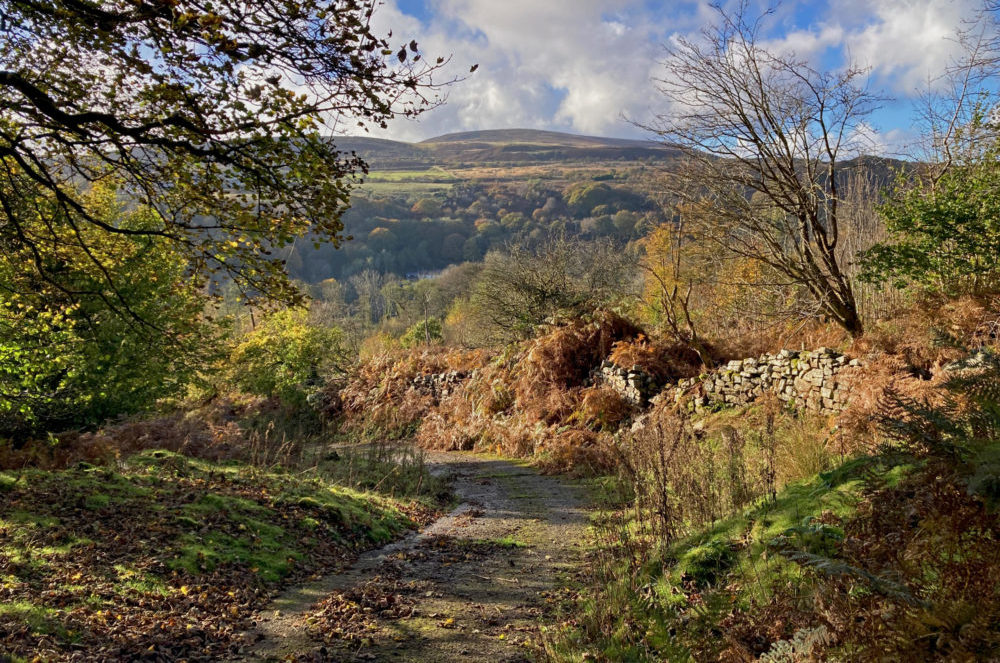
Of all the photographs I have taken over the past year of the Varteg mountainside my favourite has to be an autumnal view from Cwmafon.
It was taken high up on a very steep lane, on a beautifully sunny day in October, directly opposite the ‘Snail Creep’. The funny thing is that this lane has no name at all, but it makes ‘Snail Creep’ seem like a gentle stroll. It very much deserves to be named!
For all that it was a tough walk to get to the top, there was something hugely rewarding in making the ascent and the time taken at rest in between allowed precious moments to survey where I had been.
It was amazing to think I had been to the top of Mynydd Farteg Fawr only an hour or two earlier. I get such satisfaction and joy from the visual beauty of this landscape, but there is also the feeling of well-being that physical exercise brings.

Just a couple of weeks ago I was treated to the most magical, painterly of show of clouds sweeping across the ridge of the hill. On this day there was power in the elements and I was reminded so much of the sky studies painted by John Constable.
My admiration for his innate ability to capture the mood and feel of Nature in an age without the aid of digital cameras and such like knows no bounds really and his paintings … well they are just as fresh as ever and full of energy.
Just as Constable sought to understand the world that he could see through paint, modern thinkers and authors like Carwyn Graves echo this sentiment too, it matters that we understand the place in which we live.
There are still distant places that I would like to see and experience, but I don’t think I would exchange this for what exploring my local landscape has given me. Getting to know Mynydd Farteg Fawr and little Farteg Fach in a way brings together my love of where I live.
I am comfortable in the shelter of its valleys,
I am close to Nature in its woodlands and streams,
I enjoy the exhilaration of walking on its hilly paths,
I embrace the power of a blustery breeze along its ridgeways,
And within all that …
there is Art
there is History
And there is Spirituality.
One thing that I had thought when I wrote my first article was that a good many people would call the mynydd ‘Varteg Mountain’. I would rather think now that they would simply say ‘I am going to ‘The Dog Stone’ which sits so stately on the hillside.
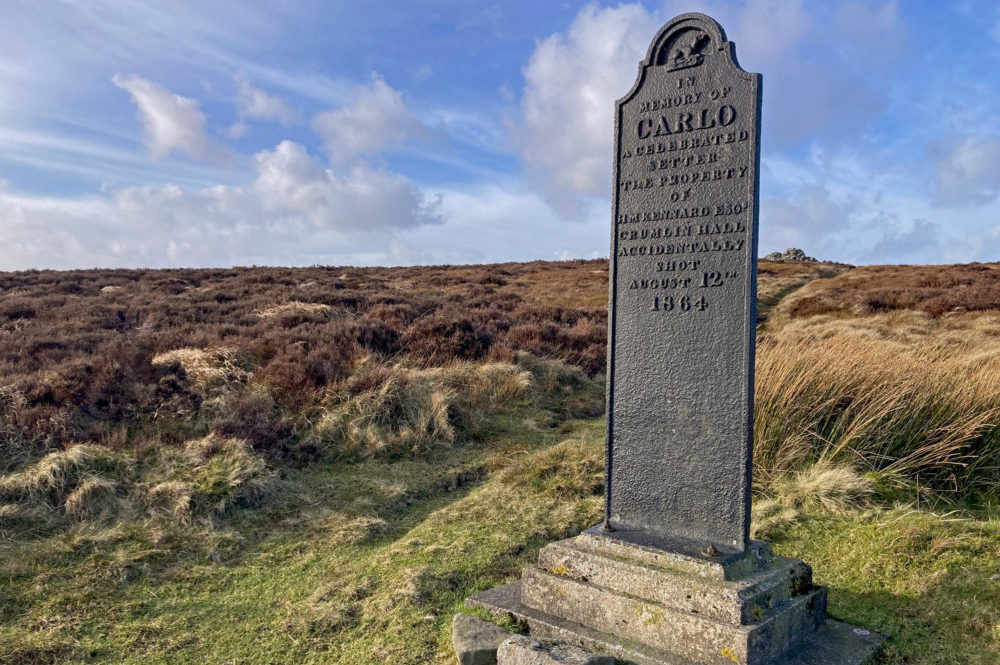
Read the more about ‘The Dog Stone’ and a little bit more in my first article about Mynydd Farteg Fawr here.
Some Useful Information about visiting Mynydd Farwteg Fawr
The Landscape – Nearby colliery spoil and industrial ruins are a reminder of how this land was used in the past, but this is a place where sheep graze freely now, with amazing panoramic views in all directions, though I feel I should point out there are dangers as well.
New signage has been put up warning ‘Danger Crack on Mountain’ advising that dogs be kept on a lead and to keep to the footpaths. I think this is very good advice.
I would again recommend staying on the footpaths because the terrain is in general uneven and often boggy.
With this in mind, there is good walking to be enjoyed.
Parking – There are multiple places where you can park to take a walk in the area.
Equipment – This landscape changes dramatically as the weather changes and the use of a stick and wearing good sturdy boots are a must. Being prepared for wet weather is always a good idea, especially in the Winter.
Support our Nation today
For the price of a cup of coffee a month you can help us create an independent, not-for-profit, national news service for the people of Wales, by the people of Wales.




